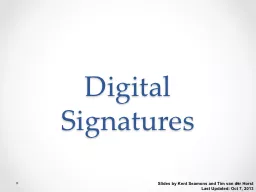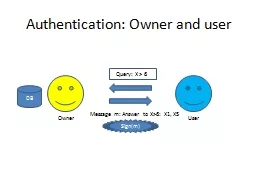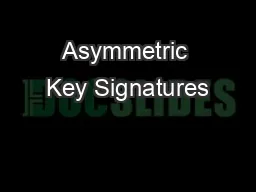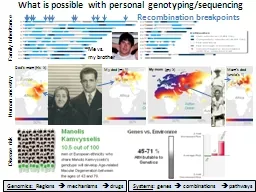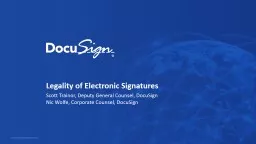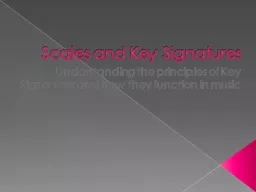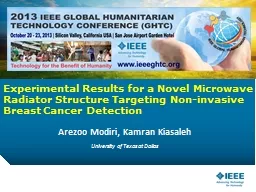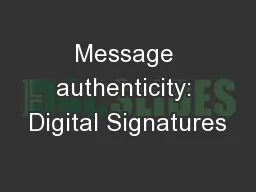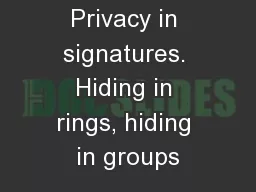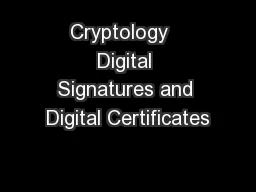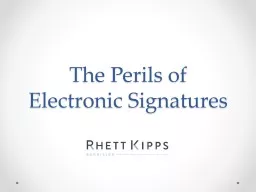PPT-Digital Signatures
Author : cheryl-pisano | Published Date : 2016-07-15
Slides by Kent Seamons and Tim van der Horst Last Updated Oct 7 2013 Digital Signatures Diagram illustrating how to sign a message Why do we use a oneway hash
Presentation Embed Code
Download Presentation
Download Presentation The PPT/PDF document "Digital Signatures" is the property of its rightful owner. Permission is granted to download and print the materials on this website for personal, non-commercial use only, and to display it on your personal computer provided you do not modify the materials and that you retain all copyright notices contained in the materials. By downloading content from our website, you accept the terms of this agreement.
Digital Signatures: Transcript
Download Rules Of Document
"Digital Signatures"The content belongs to its owner. You may download and print it for personal use, without modification, and keep all copyright notices. By downloading, you agree to these terms.
Related Documents

